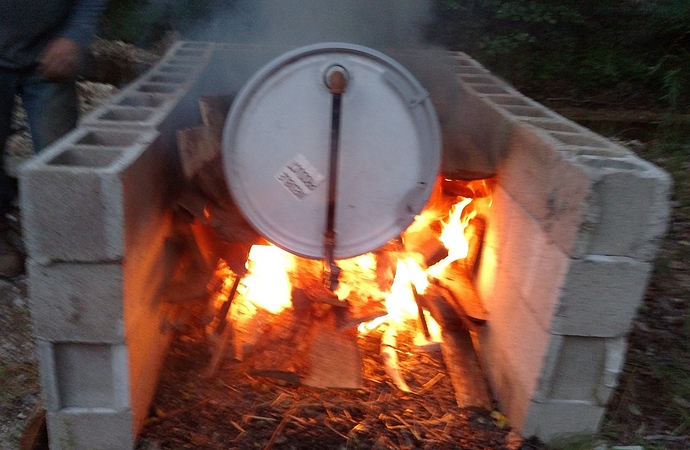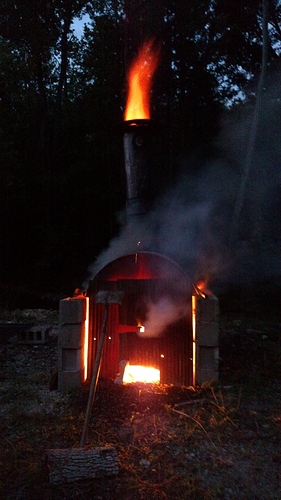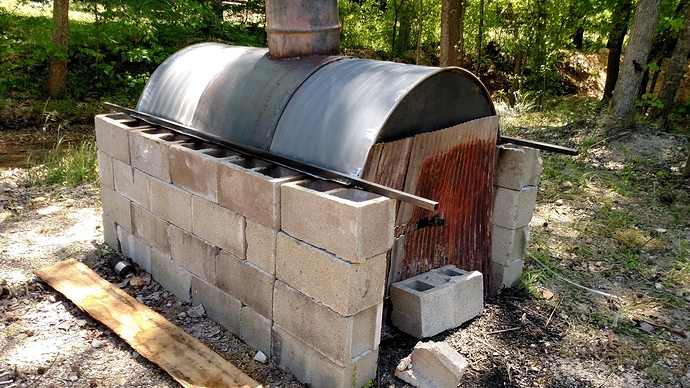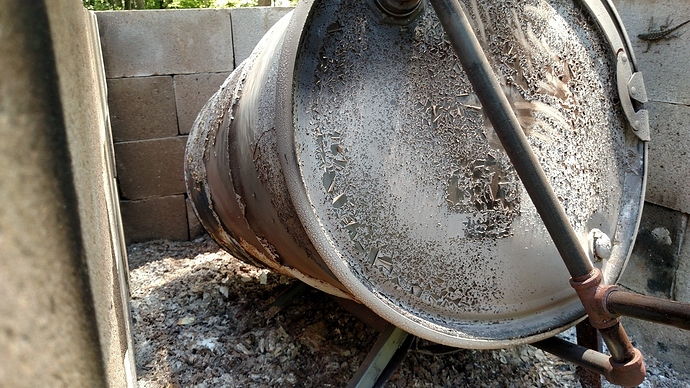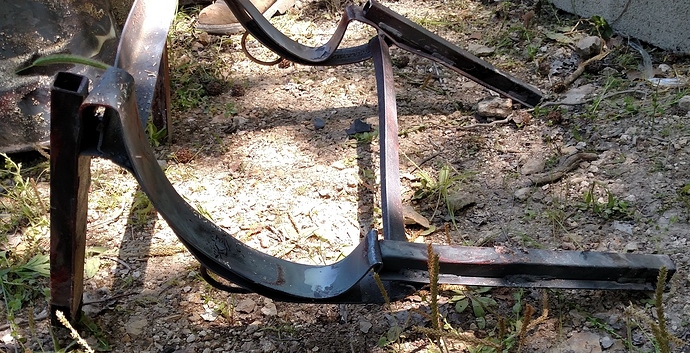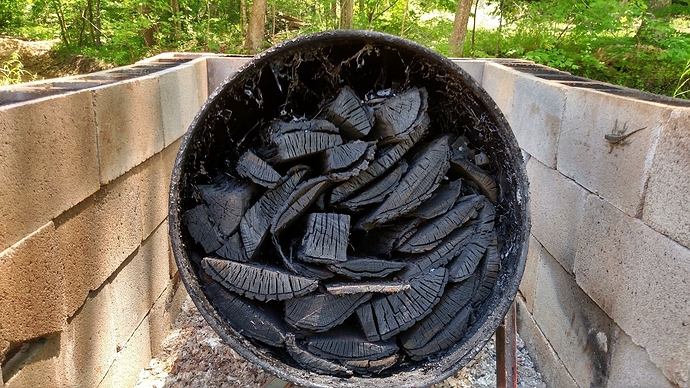Fired the New Retort
this evening, with mixed results.
Here is the 55 gallon drum, positioned on the stand, inside the retort walls, and loaded with slab wood.
Here, we have placed the lid on the drum, with the burner pipe carrying the gas underneath the barrel. We have kindled a fire around the drum.
Here, we have placed the “Quonset hut” style lid (with chimney) on the retort, along with the front heat shield. As you can see, it is already getting very hot.
Although it is difficult to see in this picture, there is a pipe that extends out through the front heat shield about 6 inches, with a valve on the end. The idea was that we could leave this valve open until the wood started making good gas, then close it to divert the gas to the burner pipe. Also, the valve provided a means of manual pressure relief, in case we felt that the vessel was becoming over-pressured.
Things did not go exactly according to plan.
First of all, the fire became very fierce very quickly. This made it very difficult to approach the valve and operate it, even from outside the heat shield.
Second, we were expecting that the inner retort would just vent steam for the first several minutes, so we started the run with the valve full open (no use pumping water vapor back into our fire). However, we were very surprised that we started making gas that wanted to flare almost immediately. The very first time I tried to flare the gas, it gave a “whoosh,” but thankfully did not sustain the flame. If it had actually sustained the flame, then it would have become almost impossible to approach the valve again, because the gas was coming out much more energetically than we had anticipated.
Now, we had a difficult decision to make. Should we close the valve, divert all of the gas to the jets, and risk over-pressuring the vessel, or should we leave it open and dissipate most of our gas to the atmosphere? We opted for a compromise, and closed the valve half-way. This definitely energized our burner, but still left a large quantity of gas venting very energetically to the atmosphere. At the retort was getting so hot that I was concerned that the gas coming out of the flare valve would auto-ignite even outside the fire shield. While this would not have been catastrophic, it would have made it impossible to approach the front of the retort. Fortunately, it never ignited.
At some point, the barrel either ruptured, or the lid began to leak. We could see a that a bunch of gas was being burned near the front of the barrel. After the reaction had cooled somewhat, we went ahead and closed the valve all the way, since we now reasoned that there was no further danger of explosive over-pressurization.
Also, it appears that at some point, the back portion of our barrel stand collapsed, and that the back of the barrel was resting on the coal bed. We were surprised by this, since we had beefed up the stand with some 1 inch square tubing to prevent such an occurrence.
Anyway, it was much too hot to study the situation any further this evening. However, it will be fascinating to have a closer look tomorrow.
But from what we have seen so far, we can already draw some conclusions:
-
The 3/4 inch pipe may be inadequate. Or, if it is adequate, it is barely adequate, and the burner tube needs more jets and larger jets in order to prevent the pressures from building up excessively in the system.
-
The stand needs to be beefed up even more.
-
The flare valve and pipe arrangement is totally inadequate. It would need to be longer and better protected in order to operate it safely and conveniently.
-
The front heat shield is inadequate given the surprising ferocity of the fire. Now, it is just some tin sheet. It should be replaced with at least 16 gauge steel and arranged more securely.
-
The “Quonset hut” lid and chimney arrangement worked very nicely, and appears to have held up well. It has handles on both ends that make it easy to put on and off, and worked out just as we had hoped.

